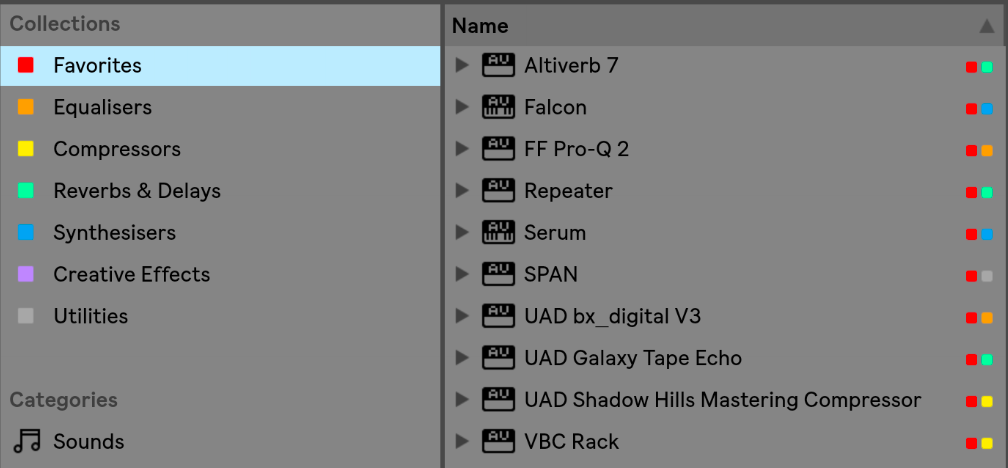
- This way they load in Ableton nice and tidy as opposed to a big pot of everything. Logic and Pro Tools have the capability to organize by developer already. Because Waves's Waveshell package behaves best when in the root plugin folder I also add a blanket /plugins/vst to Maschine's file path.
- After 10 years of using Ableton Live, I just discovered a genius method for organizing Ableton Vst Plugins in a way that improves workflow tremendously. Click To Tweet Just to make things clear, this method has been around for ages and it isn’t a method that I personally came up with.
- When you open up Ableton Live you will be give a blank canvas to start off with. The first thing you should do is create returns for the individual instruments you will be using. Like I said in my last tip, doing this will help keep your CPU down and will help with experimenting with different effects. The return you use for the drums you could.
Working in a large session with many tracks can be overwhelming. Have you ever wondered how to solve this problem? Here are some ways you can organize your Ableton session to enhance your workflow and creativity.
Your shopping cart is empty. But it wants to be full. Fill it with MultiTracks, CustomMixes®, RehearsalMixes and more. You can likewise organize parameters you want to use in your arrangement from your various instruments and effects. Click the Fold/Unfold Device Parameters to show or hide all the various parameters of an Ableton device or a plug-in. Plug-ins often have too many parameters to manage all at once.
1. Label Tracks
If all of your tracks are labeled to correspond with the instruments they represent, navigating you session becomes much easier. For example, if your track is named “BASS” instead of “2 Basic Sinelike”, then you will be able to easily find your bass track among all of your other tracks. Right-click on the track header and select the “Rename” option. It will then allow you to type in a new name for the track.

2. Color-Code Tracks
Assigning colors to tracks based on the instruments you’re using can be very helpful. Having a color to associate with different sounds makes it easier to quickly find tracks in your session. For example, if you color-code all of your synth tracks to be yellow, any time you look up and see that color you will automatically know you’re looking at the synth tracks. If you right-click on the track header it will open up a menu that has a grid of colors at the bottom. Just select the color square that you want and it will change the track header to that color.3. Create Groups
Let’s say your working with a session that has a hefty vocal arrangement in it. This means you are going to have many vocal tracks to deal with. A way to declutter your session, if you have multiple tracks that fall under the same category, is to create a group. Hold down the “Shift” key and click on each track that you want to be included in the group. Once you have selected all of the tracks that you want, right-click on one of the selected tracks and choose “Group Tracks” from the drop down menu. This will put all of the tracks you selected under one group tab. You can hide the tracks in the group while you aren’t working with them to free up visual space in your session. The black triangle beside the group name will allow you to open and close the group when you need to access the individual tracks.
Download Ableton Plugins
4. Add Locators
Locators can be added in the arrangement view of Ableton. Right-click in the grey space below the measure numbers and select “Add Locator” from the drop down menu. This will give you a grey triangle in the location that you originally clicked. Right-click on the triangle and select “Rename” from the drop down menu to label the locator. These locators can be helpful in identifying sections of your song, like a verse, chorus, or bridge.

How To Add Vst To Ableton
After using these tips, your session should be much easier to navigate!
Want to know more about the Music
Production Program at MMMMAVEN? Drop us a line below.
How To Organize Plugins In Ableton 10
Oops! We could not locate your form.
How To Use Plugins Ableton
Posted by: Tori Leche